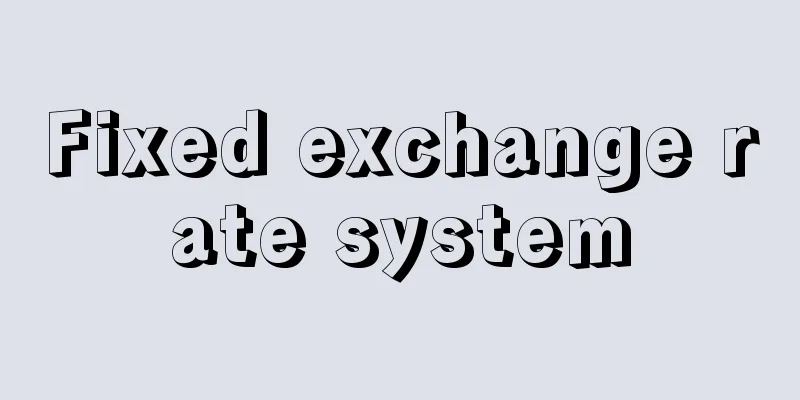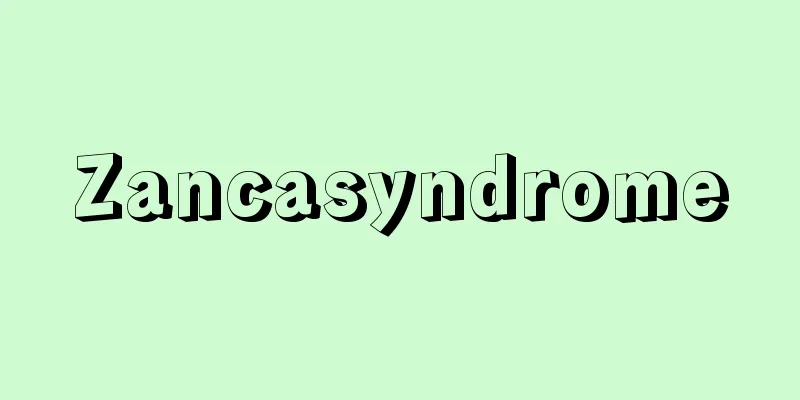Fixed exchange rate system

|
A system of fixed exchange rates in which a country's currency is fixed to a foreign currency, etc., at an exchange rate announced in advance by the monetary authority. There are two types of fixed exchange rate systems: a single currency fixed system, which fixes the currency to a single currency such as the US dollar, and a currency basket system, which fixes the currency to a composite currency such as the SDR or a currency basket. The advantage of a fixed exchange rate system is that it stabilizes the exchange rate and suppresses inflationary monetary policies. On the other hand, the weakness of a fixed exchange rate system is that it may be subject to speculative attacks if speculators judge that the fixed exchange rate system cannot be maintained due to a deterioration of the real economy or a lack of foreign exchange reserves, and it may actually become impossible to maintain. The fixed exchange rate system of the Bretton Woods system effectively collapsed in the first quarter of 1973 when major countries switched to floating exchange rate systems, and the second amendment to the IMF Agreement (1978) allowed countries to freely choose their own exchange rate system. The number of countries adopting fixed exchange rate systems has been decreasing since the 1990s. However, a system called a currency board system, in which a country issues its own cash currency in exchange for reserve currency holdings such as dollars or euros and fixes the exchange rate, is still used in some countries. The advantages of a currency board system are that it guarantees the convertibility of a country's currency by backing it with a reserve currency, and since unlimited excessive issuance is not possible, it enforces discipline in macroeconomic management, and that it increases confidence in the country's currency through an automatic adjustment process: current account deficit → decrease in reserve currency → decrease in currency issuance → increase in interest rates → deflation → current account surplus. However, since it is dependent on the monetary policy of the country that issues the reserve currency, which is backed by a fixed exchange rate, it cannot adopt an independent monetary policy and cannot function as a lender of last resort in the event of a domestic financial crisis. Currency board systems have been adopted in Hong Kong (1983), Estonia (1992), Lithuania (1994), Bulgaria (1997), and other countries. Argentina, which adopted the currency board in 1991, abolished the currency board system in February 2002 and switched to a floating exchange rate system after suffering a sudden capital outflow due to its economic collapse in 2001. (Naoyoshi Kinukawa, Director of Economic Research, Institute for International Monetary Affairs / 2007) Source : "Chiezo" published by Asahi Shimbun Publications Co., Ltd. About Chiezo |
|
通貨当局があらかじめ発表した為替相場で、自国通貨を外国通貨などに固定する為替相場制度。米ドルなどの単一通貨に固定する単一通貨固定制と、SDRや通貨バスケットなど複数通貨により合成されたものに固定する通貨バスケット制がある。固定相場制のメリットとして、為替相場を安定させインフレ的金融政策を抑制する点が挙げられる。一方、実体経済が悪化したり外貨準備不足のため固定相場制を維持できないと投機家に判断されると投機攻撃を受け、実際に維持できなくなる場合があるのが弱点。ブレトン・ウッズ体制の固定為替相場制は、1973年第1四半期に主要国が変動為替相場制に移行したため事実上崩壊、IMF協定第2次改正(78年)によって各国は自由に為替相場制度を選択できるようになった。固定相場制を採用する国は、90年代に入って減少傾向にある。もっとも、カレンシーボード制(currency‐board system)と呼ばれる、ドルやユーロなどの準備通貨保有見合いに自国の現金通貨を発行し、この交換比率を固定する制度はいくつかの国で引き続き採用されている。カレンシーボード制のメリットとしては、準備通貨の裏付けをもとに自国通貨の交換性を保証しており、その無制限な乱発ができないためマクロ経済運営上の規律が働くこと、及び経常収支赤字化→準備通貨減少→通貨発行量減少→金利上昇→デフレ→経常収支黒字化、といった自動調節プロセスが働き、自国通貨への信認も高まることが挙げられる。しかし、交換比率を固定し裏付けとした準備通貨の発行国の金融政策に左右されるため、自主的な金融政策をとることができず、国内金融危機に際して最後の貸手機能を果たすことができない。カレンシーボード制は、香港(1983年)、エストニア(92年)、リトアニア(94年)、ブルガリア(97年)などで採用されている。91年に採用したアルゼンチンは、2001年に経済破たんから急激な資金流出に見舞われたため02年2月、カレンシーボード制を廃止、変動相場制に移行した。
(絹川直良 国際通貨研究所経済調査部長 / 2007年) 出典 (株)朝日新聞出版発行「知恵蔵」知恵蔵について 情報 |
<<: Fixed assets - Koteishisan (English spelling) fixed assets
Recommend
Pressure-sensitive adhesive
...Alternatively, it is effective to allow suffic...
Wet and dry bulb hygrometer (English spelling)
An instrument that measures the humidity of the at...
Buprestidae
...Their hard wings are also suitable for crafts,...
Tales of Emperor Kansei
…He is said to be the founder of the Zhou dynasty...
Bronchitis
It is an inflammation of the bronchial mucosa who...
Babina holsti (English spelling)
… [Takahiro Matsui]. … *Some of the terminology t...
Bleuler, M.
…A Swiss psychiatrist who first coined the term “...
Kishizawa Koshikibu (6th Generation)
…Lyrics by Okamura Kakiko. Music composed by Kish...
Marine natural science
…The ocean is closer to us than outer space, but ...
Messenia - Messenia (English spelling)
The name of a region in the southwest of the Pelo...
Manda China (English spelling)
…There are many prehistoric rock paintings. The m...
Wisteria frutescens - Wisteria frutescens
…[Yamabe Tomoyuki]. … *Some of the terminology th...
《Vampire Bani》
...The vampires of Merimee and Gogol remained in ...
Sutra master - Kyouji
In the 8th century Nara period, the term referred...
Kazaori Eboshi - Kazaori Eboshi
〘Noun〙 (meaning an eboshi hat that has been folded...









